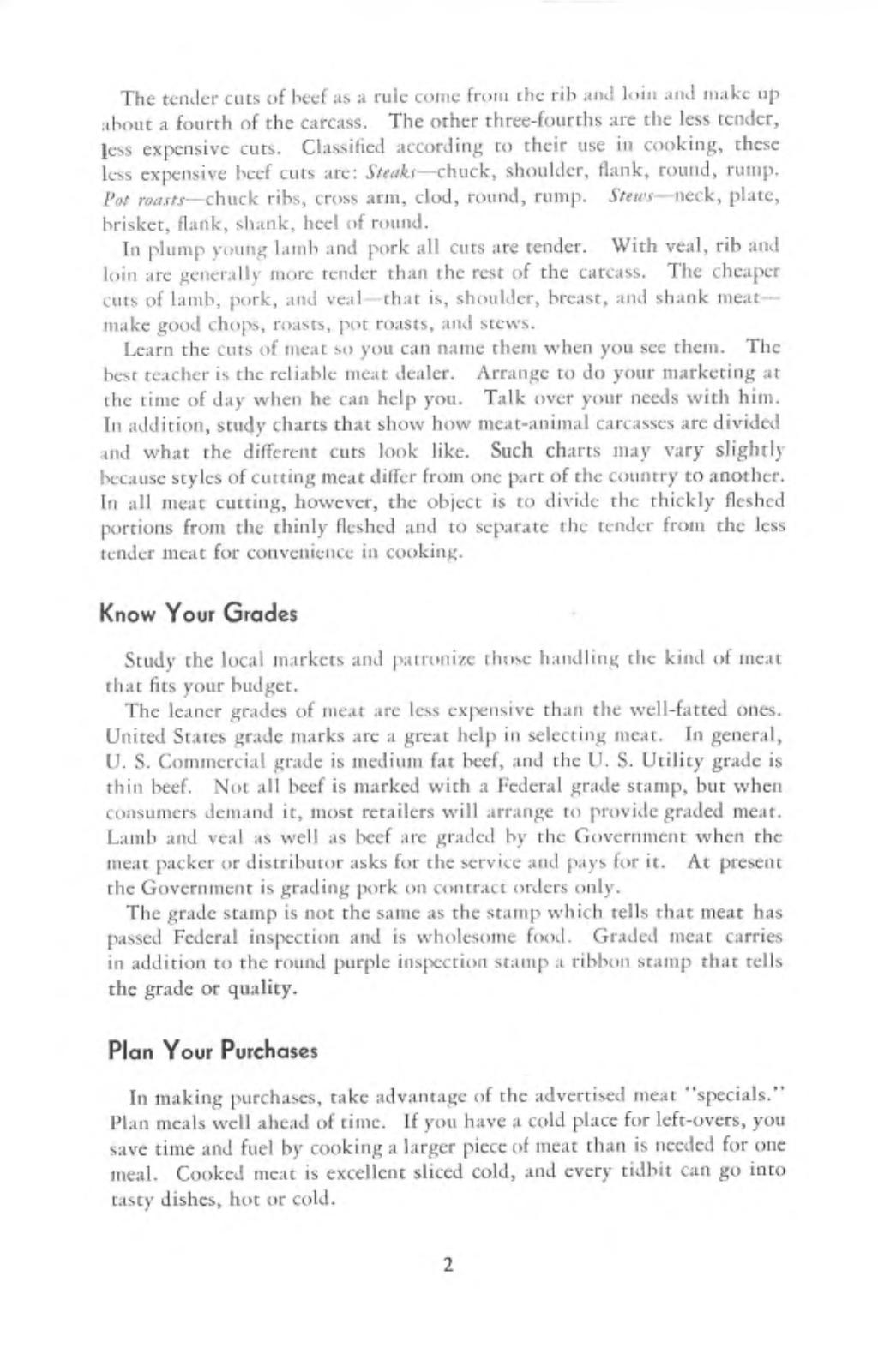The tender cuts of beef as a rule come from the rib and loin and make up about a fourth of the carcass. The other three-fourths are the less tender, less expensive cuts. Classified according to their use in cooking, these less expensive beef cuts are: Steaks—chuck, shoulder, flank, round, rump. Pot roasts—chuck ribs, cross arm, clod, round, rump. Stews—neck, plate, brisket, flank, shank, heel of round.
In plump young lamb and pork all cuts are tender. With veal, rib and loin are generally more tender than the rest of the carcass. The cheaper cuts of lamb, pork, and veal—that is, shoulder, breast, and shank meat—make good chops, roasts, pot roasts, and stews.
Learn the cuts of meat so you can name them when you see them. The best teacher is the reliable meat dealer. Arrange to do your marketing at the time of day when he can help you. Talk over your needs with him. In addition, study charts that show how meat-animal carcasses are divided and what the different cuts look like. Such charts may vary slightly because styles of cutting meat differ from one part of the country to another. In all meat cutting, however, the object is to divide the thickly fleshed portions from the thinly fleshed and to separate the tender from the less tender meat for convenience in cooking.
Know Your Grades
Study the local markets and patronize those handling the kind of meat that fits your budget.
The leaner grades of meat are less expensive than the well-fatted ones. United States grade marks are a great help in selecting meat. In general, U. S. Commercial grade is medium fat beef, and the U. S. Utility grade is thin beef. Not all beef is marked with a Federal grade stamp, but when consumers demand it, most retailers will arrange to provide graded meat. Lamb and veal as well as beef are graded by the Government when the meat packer or distributor asks for the service and pays for it. At present the Government is grading pork on contract orders only.
The grade stamp is not the same as the stamp which tells that meat has passed Federal inspection and is wholesome food. Graded meat carries in addition to the round purple inspection stamp a ribbon stamp that tells the grade or quality.
Plan Your Purchases
In making purchases, take advantage of the advertised meat "specials." Plan meals well ahead of time. If you have a cold place for left-overs, you save time and fuel by cooking a larger piece of meat than is needed for one meal. Cooked meat is excellent sliced cold, and every tidbit can go into tasty dishes, hot or cold.
2
